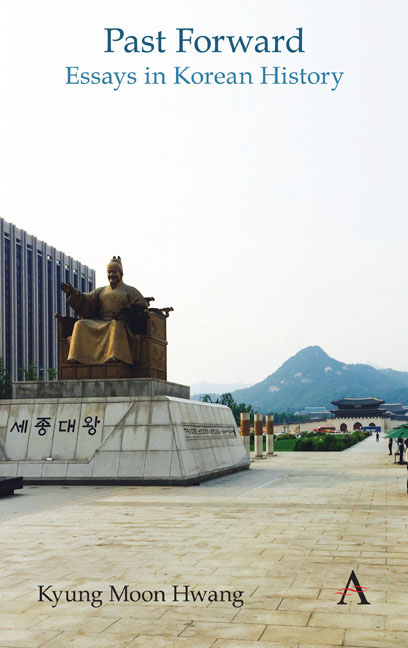Book contents
- Frontmatter
- Contents
- List of Figures
- Foreword
- Chronologies of Korean History
- Themes
- Acknowledgments
- Note on Romanization and Spelling
- Part I Circulating History
- Part II Durable Traditions
- Part III Ancient Remains
- Part IV Dynastic Depths
- 20 Currency and National Identity
- 21 Concubine Descendants
- 22 The Real Lives of Gisaeng Courtesans
- 23 A Shocking Execution
- Part V Modern Origins
- Part VI Challenges of Nationhood
- Part VII History Makers
- Part VIII External Presences
- Part IX Trials of Modernization
- Part X Gripped by the Past
- Index
20 - Currency and National Identity
from Part IV - Dynastic Depths
- Frontmatter
- Contents
- List of Figures
- Foreword
- Chronologies of Korean History
- Themes
- Acknowledgments
- Note on Romanization and Spelling
- Part I Circulating History
- Part II Durable Traditions
- Part III Ancient Remains
- Part IV Dynastic Depths
- 20 Currency and National Identity
- 21 Concubine Descendants
- 22 The Real Lives of Gisaeng Courtesans
- 23 A Shocking Execution
- Part V Modern Origins
- Part VI Challenges of Nationhood
- Part VII History Makers
- Part VIII External Presences
- Part IX Trials of Modernization
- Part X Gripped by the Past
- Index
Summary
Almost everyone thinks about money to a certain extent, but how often do people think about the symbols that they see on their coins and bills? For students of history, the images on currency, particularly of people, provide fascinating insight into a country's or a civilization's history?or more accurately, into how the people of a certain nation view their history.
A cursory survey around the world shows what most observers would suspect?that revered political leaders, military heroes, great scientists and famous cultural figures from the past usually appear on the currencies. Granted, the money in countries with autocratic leaderships, such as China or North Korea, often features recent or current dictators who are the objects of personality cults. But in most other places, the figures on the currency encapsulate what the people want to emphasize about their shared culture and hence serve as mirrors of contemporary sentiments and values. They are meant to reflect, in sum, a sense of unity and commonality.
This explains, perhaps, why the Queen of England is featured so prominently on the currencies not only of the United Kingdom but of other Commonwealth countries, which understandably has become a point of contention. Such sentiments, then, also tend to change over time, and currencies often reflect this by changing the faces that appear on them.
In South Korea, however, what is striking is the continuity of the historical figures showcased on its coins and banknotes. In the 1950s, the image of then-President Syngman Rhee was featured on the bills, which said more about Rhee and his dictatorial rule than any sense of history at the time. But since the 1960s and 1970s, three main figures from the past have graced the currency: Admiral Yi Sun-sin, King Sejong the Great, and the great scholar Yi I, or Yulgok. The philosopher Yi Hwang, or Toegye, joined this group in the early 1980s, and finally, in the late 2000s, a fifth figureappeared, Lady Shin Saimdang, an artist and, interestingly, the mother of Yulgok.
When the Bank of (South) Korea announced that the new 50,000-won banknote would feature Lady Shin, there was an outcry, but not because a woman had finally been selected, since it was known for a while that this would happen.
- Type
- Chapter
- Information
- Past ForwardEssays in Korean History, pp. 57 - 60Publisher: Anthem PressPrint publication year: 2019



